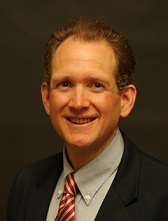 The ambulatory surgery center industry is no longer a young business. The rapid growth of centers has led to stiff competition, and hospital market control has only added to the struggle to succeed. Luke Lambert, CEO of Ambulatory Surgical Centers of America, discusses the ASC market saturation and shares strategies for success.
The ambulatory surgery center industry is no longer a young business. The rapid growth of centers has led to stiff competition, and hospital market control has only added to the struggle to succeed. Luke Lambert, CEO of Ambulatory Surgical Centers of America, discusses the ASC market saturation and shares strategies for success. Question: What are the major factors driving increased saturation and competition in ASC markets?
Luke Lambert: The main competitive forces of late have been hospital employment of referral sources and hospital control of payers. Additionally, in states that have had no restrictions on ASC development the plethora of competitors has made it harder to negotiate attractive rates with payers and most available physicians have already aligned with centers.
Q: What are the biggest challenges to ASCs in saturated markets?
LL: In markets with large numbers of ASCs it can be hard to negotiate good payer contracts without having a hospital joint venture partner. Payers just look at their lowest contracts in a competitive market and offer those rates to any newcomers.
Also, in saturated markets competition is largely between ASCs as most of the eligible ASC cases have already left the hospital outpatient departments. In markets with many ASCs for surgeons to choose from, successful centers face the challenge of getting new physician partners to buy-in at high valuations and struggling centers may find it impossible to recruit despite low valuations.
Q: How does market saturation affect case volume and physician recruitment?
LL: The weak struggle to attract cases and physicians in saturated markets. Physician buy-in values get depressed given the many options available. The high supply of investment opportunities for physicians negatively effects center value.
Q: How can ASC leaders give their center a competitive edge in such markets?
LL: The competitive edge in these markets comes from having a quality clinical reputation, solid management, strong payer contracts, an attractive facility and reasonable financial performance. With these attributes a center has a number of dimension on which to appeal to physician recruits.
Another strategy that has proven effective in these markets is to look at merger opportunities between centers. Two breakeven facilities can merge and run their combined volume profitably through one facility. This can be a win for both centers.
More Articles on ASC Issues:
7 Things for ASC Leaders to Know for Thursday
5 Recent ASC Industry Moves & Honors
7 Financial Warning Signs: How to Know if Your ASC is in Trouble

